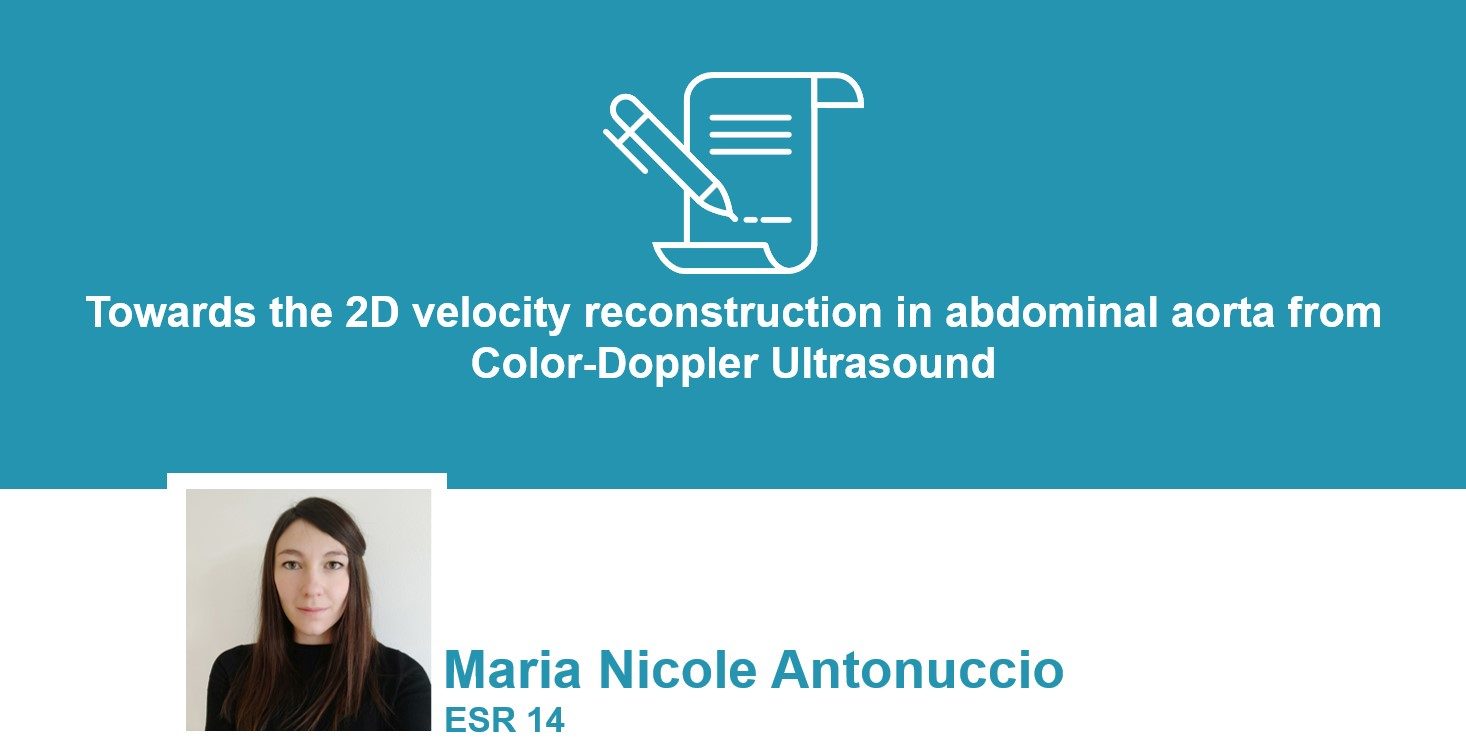A new MeDiTATe Project publication: Towards the 2D velocity reconstruction in abdominal aorta from Color-Doppler Ultrasound

Maria Nicole Antonuccio, ESR 14 of the MeDiTATe project, published the paper titled Towards the 2D velocity reconstruction in abdominal aorta from Color-Doppler Ultrasound in Medical Engineering & Physics Journal.
The work was developed in collaboration with Hernan G. Morales, Alexandre This and Laurence Rouet from Philips Research Paris, Katia Capellini and Simona Celi from BioCardioLab (Fondazione Toscana G. Monasterio), Stéphane Avril from Mines Saint-Étienne.
The paper whose abstract is reported in the following lines, is available at this link.
Magnetic resonance imaging (MRI) is the preferred modality to assess hemodynamics in healthy and diseased blood vessels. As an affordable and non-invasive alternative, Color-Doppler imaging is a good candidate. Nevertheless, Color-Doppler acquisitions provide only partial information on the blood velocity within the vessel. We present a framework to reconstruct 2D velocity fields in the aorta. We generated 2D Color-Doppler-like images from patient-specific Computational Fluid Dynamics (CFD) models of abdominal aortas and evaluated the framework’s performance. The 2D velocity field reconstruction is based on the minimization of a cost function, in which the reconstructed velocities are constrained to satisfy fluid dynamics principles. The numerical evaluations show that the reconstructed vector flow fields agree with ground-truth velocities, with an average magnitude error of less than and an average angular error of less than . We lastly illustrate the 2D velocity field reconstructed from in-vivo Color-Doppler data. Observing the hemodynamics in patients is expected to have a clinical impact in assessing disease development and progression, such as abdominal aortic aneurysms.
